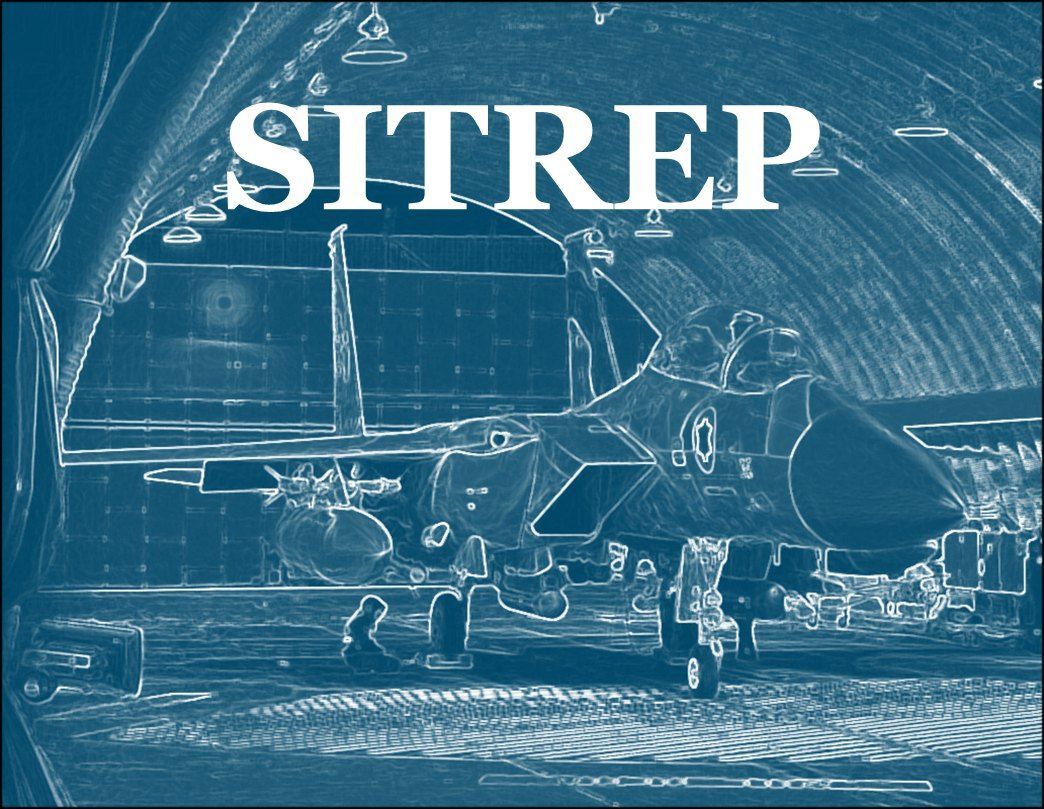6 December 2021
Although the Cold War contains important lessons for the future of US-China relations, by overemphasising similarities between the present and the past, policy elites risk succumbing to an oversimplified narrative.
The deteriorating state of relations between the United States and the People’s Republic of China has drawn many comparisons to the Cold War. Although many such comparisons are made by the media to attract readers with dramatic headlines, the ‘Second Cold War’ concept is also gaining traction with policy elites and world leaders as well.
In September this year, UN Secretary-General Antonio Guterres warned that the US and China must avoid a cold war ‘at all cost’. Policy makers and strategists all rely to some extent on drawing lessons from history to craft appropriate strategies for the future, but just how useful are comparisons to the Cold War?
The Geostrategic Chessboard & World Order
Despite superficial similarities, the Cold War analogy threatens to oversimplify an increasingly complex geostrategic landscape. China presents an altogether different challenge to the US than the Soviet Union; moreover, the chessboard that both sides are playing on is vastly different to that of the latter 20th century.
The Cold War was defined by a bipolar world order. On one side was the US and on the other was the Soviet Union. As these two superpowers vied against each other, the rest of the world fell into one of their spheres of influence or tried to avoid confrontation altogether by declaring non-alignment. At the climax of the Cold War, the US emerged as hegemon when the Soviet Union collapsed, and the world order entered a state of unipolarity.
The endurance of the American-led unipolar world order has become a subject of intense debate and the rise of China relative to a perceived American decline has led many commentators to question whether a confrontation between the rising and ruling powers is inevitable. In the context of the Cold War analogy, the rise of China is presented as evidence for a return to a bipolar world order, in which the US and China constitute competing poles.
Although the balance of power will likely continue to narrow between Washington and Beijing, bipolarity is the wrong concept to apply alone to the emerging world order. Yes, dynamics of bipolarity are likely to be in play; chiefly, the US and China will likely sit at the top of the global pecking order as superpowers. In practice however, the world order is more likely to become increasingly multipolar. Although the US and China may materially qualify as the world’s only superpowers, regional powers like the European Union (EU), Russia, India, and Japan, will likely wield enough power to pursue ends which may dramatically differ from those of the two superpowers. Bipolarity would more severely constrain the ability of these actors to act independently from the superpowers, but they possess the means and freedom of action to pursue their own objectives at regional and sometimes global levels. It would be a mistake for both Washington and Beijing to fixate purely on the other superpower to the detriment of attention to these regional players.
With more than two significant great powers likely to be in play, competition between the US and China will take place over a far more complex geostrategic space than that of the Cold War.
Alignment and Alliances
One of the Cold War’s defining features was the relatively rigid division of the world between two competing blocs of power and a third non-aligned bloc. Those who view the Cold War as a model for the US-China relationship often predict the development of analogous alliance dynamics.
The Quadrilateral Security Dialogue (the ‘Quad’) has certainly been attracting comparisons to the Cold war. The Quad falls short of being a formal alliance, but facilitates security cooperation between the US, Japan, Australia, and India. The fact that China constitutes the Quad’s chief security concern is somewhat of an open secret. China has viewed the Quad negatively since its inception in 2007. The recently agreed upon AUKUS pact – a trilateral security pact between the US, UK and Australia - has further fuelled suspicions in Beijing that the US is pursuing a Cold War-esque strategy of containment against China. The Chinese embassy in Washington accused the three AUKUS countries of holding a ‘Cold War mentality and ideological prejudice’ against China.
At the same time, there have been suggestions that China is building its own alliance of states whose interests lie in toppling the American-led liberal international order. Russia is frequently cited as natural partner, given Moscow’s historically antagonistic relationship with Washington, which has again been deteriorating since 2014. A deal signed between China and Iran earlier this year has been alluded to as further evidence that Beijing is building anti-American partnerships.
There are truths to arguments that both sides are making diplomatic moves against the other, but again, there is a risk of oversimplification. For example, members of the Quad are clearly nervous about China, and it makes sense for them to take cautious steps towards closer security cooperation. However, very little security cooperation of any consequence has so far occurred beyond joint-training exercises.
Washington’s traditional allies in the West and a growing number of Asian states are anxious about the rise of China, but they are also keen to maintain a cordial relationship mostly due to economic factors. The EU for example, is unlikely to abandon its strategic autonomy in favour of an American-led approach to China despite various points of friction between Brussels and Beijing. As Ryan Hass points out, ‘few — if any — US allies or partners would be receptive to aligning with the United States against China.’
The possibility that China will establish a formal alliance network against the US is equally improbable. Although several states share an interest in toppling the American-led order, their other interests diverge far too greatly for them to align firmly against the US. In any case, for China, such a firm alignment would be bad for business. If China were to ally itself more formally with Iran for example, it would severely strain relations with Saudi Arabia, Israel, and several other states. China has been successful at international trade and diplomacy in part because of its willingness to deal with anyone; abandoning that approach to instead insist upon rigid alignment would be counterproductive.
Economic Competition & Interdependence
The Cold War analogy is at its weakest regarding the economic dimensions of US-China competition. Some commentators have made the case that the US-China trade war foreshadows a wide-scale decoupling of the economies and a return to largely separated Cold War-esque economic blocs. Others have suggested that the US might again pursue a strategy of containment against China as it did against the Soviet Union.
These arguments ignore several key factors. Firstly, the US and China are already heavily interdependent in a way that the US and Soviet Union were not proceeding and during the Cold War. For the most part, Washington did not have to worry about the potential of crippling damage to mutual trade, supply chains, and investment flows when it economically isolated Moscow; the same cannot be said vis-à-vis Beijing.
Secondly, and perhaps more importantly, the view that nations are either in a state of diplomatic harmony in which they enjoy interdependence and trade, or that they are in a state of hostility in which their economies are almost entirely independent from one another, is far too binary. Capitalist peace theory is probably to blame for this false assumption. According to this theory, market openness and economic interdependence promote peace between states. Contrary to this popular theory, the openness of international markets and deepening interdependence may expose new avenues of attack for competing states like the US and China.
A paper published in 2019 by scholars Henry Farrell and Abraham L. Newman introduces the concept of weaponised interdependence, which explains how flows of physical goods, finances, and information have made new coercive measures available for powerful states. Actors such as the US and China who control or influence key hubs in the networked international economy can leverage their position to either gather intelligence on an adversary or block that adversary from accessing global economic hubs.
It is more likely then, that the US and China will have to make difficult decisions as to where to maintain interdependence and where to decouple. Certain areas are made more vulnerable by interdependence than others and it is here that decoupling will mostly likely take place. Both sides have already tried to separate some supply chains where sensitive technologies are an issue. The US in particular, is concerned that China is able to steal American technology and intellectual property. Meanwhile, China’s dual circulation economic strategy is designed in part to offset the costs associated with decoupling and contractions in global economic trade. The overall picture, however, is that economic interdependence will remain. US exports to China actually grew by 16.9 percent in 2020 and tariffs have thus far failed to deter companies from either country purchasing goods en masse.
Short of open conflict, it is hard to envision a scenario in which interdependence between the US and China completely dissolves. The emergence of weaponised interdependence as a viable strategic tool means that decoupling would lessen the leverage available to either side in a competitive context. The US in particular, would have fewer carrots or sticks to restrain Chinese actions if interdependence crumbled. Washington would have to rely more exclusively on cruder military means to influence Chinese behaviour. At the same time, full-scale decoupling would be extremely costly, and it is unlikely that the US could contain China in any case, given its prominent position in the global economy.
Conclusion
Competition between the US and China may escalate to the point where it can be described as a cold war; the mistake being made by some commentators is that they are forecasting the Second Cold War. Useful points of comparison do exist between present US-China tensions and the Cold War, but a great deal of nuance and complexity is lost when these are overemphasised. The Cold War does not always provide the right lessons for addressing new challenges like weaponised interdependence. By conflating the past with the present, strategists risk learning the right lessons for the wrong conflict.











